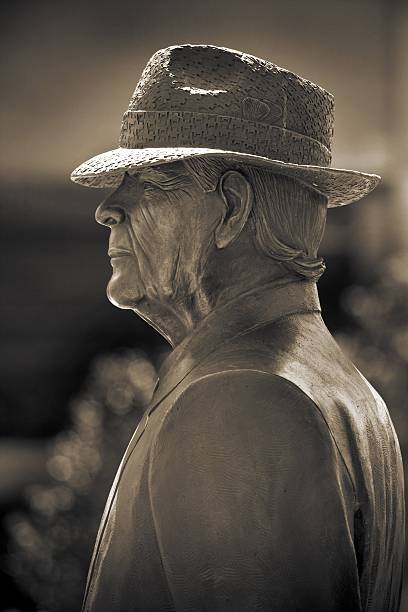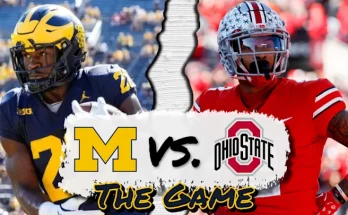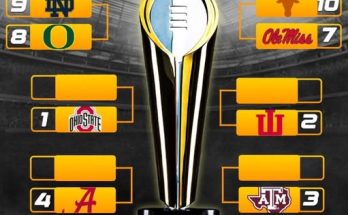That napkin: It’s in the Alabama Football Museum today, under glass. The stats are barely legible, but the meaning is crystal clear. A humble piece of paper, creased and worn with age, yet its significance stretches far beyond the ink and smudges that time has nearly erased. This napkin is not just a relic; it is a symbol of a moment that shaped the destiny of Alabama football, a testament to perseverance, passion, and the pursuit of greatness.
To understand why this napkin holds such weight, one must travel back to a time when Alabama football was at a crossroads. It was a season unlike any other—a time when the expectations were soaring and the pressure was mounting. The team was talented, the fans hungry, but the path to glory was never guaranteed. Amid the roar of the crowd and the weight of tradition, something extraordinary happened, and that moment was captured on a simple, unassuming napkin.
The napkin was scrawled with numbers and notes by a coach known for his sharp mind and relentless drive. The ink had faded, and the handwriting was hurried and almost frantic, but those numbers told a story. They were statistics, yes, but more than that, they were a roadmap—a game plan born out of experience, insight, and hope. Those figures represented a deep understanding of the game’s nuances, of player strengths and weaknesses, of the opposition’s tactics. It was a plan crafted not in the sterile environment of a locker room chalkboard but in a moment of raw, unfiltered inspiration, scribbled on whatever surface was at hand—a napkin.
That napkin has since become a sacred artifact, a symbol of the grit and determination that defines Alabama football. Fans and historians alike speak of it with reverence, knowing that its presence under glass in the museum is a tribute to an era when Alabama redefined itself. The season that followed was one for the ages. The team executed the strategy with precision, overcoming adversity on the field and silencing critics off it. Every touchdown, every defensive stand, every moment of triumph can be traced back to the vision encapsulated in those barely legible stats on that fragile napkin.
But beyond the stats and the victories, the napkin represents something more profound. It embodies the spirit of innovation and resilience. In a sport steeped in tradition, where every move is scrutinized and legacies are built on the backs of giants, this napkin reminds us that greatness often comes from unexpected places. It tells the story of a coach who refused to be confined by conventional wisdom, who saw opportunity in chaos and clarity in uncertainty. That coach’s ability to adapt, to think on his feet, and to trust his instincts is immortalized in the faded ink on that napkin.
Moreover, the napkin serves as a bridge between generations. Visitors to the Alabama Football Museum pause before the glass case, some recognizing the handwriting, others learning the story for the first time. For older fans, it evokes memories of a season that reignited their passion for the game. For younger generations, it is a tangible connection to a legacy they aspire to uphold. The napkin teaches a lesson that transcends football—that success is often born from preparation meeting opportunity, and that the smallest, most overlooked moments can become defining chapters in a team’s history.
The story behind the napkin is also a testament to teamwork. While the stats and strategy were penned by one man, the execution was a collective effort. Players, coaches, and support staff all contributed to turning that napkin’s vision into reality. Each practice, each play, each adjustment was a step towards fulfilling the promise contained in those scrawled numbers. The napkin symbolizes not only the brilliance of a singular mind but the power of unity and shared purpose.
As the years have passed, the napkin has weathered the same challenges faced by the team it helped inspire—time, scrutiny, and the changing tides of the sport. Yet, it remains a beacon, preserved carefully behind glass, reminding everyone who sees it that greatness is a journey, not a destination. It is a reminder that beneath the helmets and jerseys lie stories of grit, sacrifice, and moments of brilliance captured in the simplest of ways.
In a world where the game of football is constantly evolving, where technology and analytics play an ever-growing role, the napkin stands as a symbol of the human element—the creativity, intuition, and passion that no algorithm can replace. It is a testament to the enduring power of a single idea, conceived in a fleeting moment, to change the course of history.
Visitors leave the Alabama Football Museum carrying with them more than just the memory of a game or a season. They carry with them the inspiration of that napkin—an emblem of what is possible when preparation, courage, and vision come together. It is a story that continues to inspire coaches, players, and fans alike, reminding everyone that sometimes the most profound impact comes from the simplest acts.
That napkin, though fragile and worn, remains etched in the hearts of all who cherish Alabama football. It is proof that even the smallest scrap of paper can hold the weight of a legacy, that beneath the faded stats lies a story of triumph and hope that will resonate for generations to come. Under glass, in the Alabama Football Museum, the napkin waits silently—but its message is loud and clear: greatness is born from moments like these, and the spirit of Alabama football lives on, forever inked in history.



